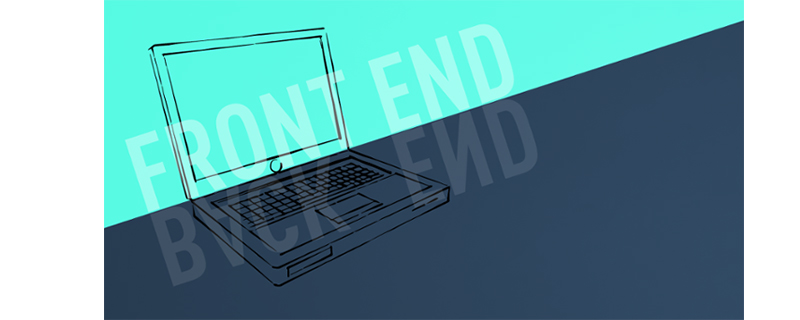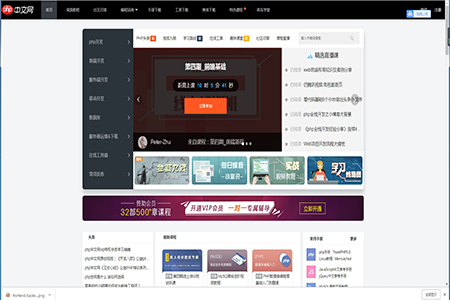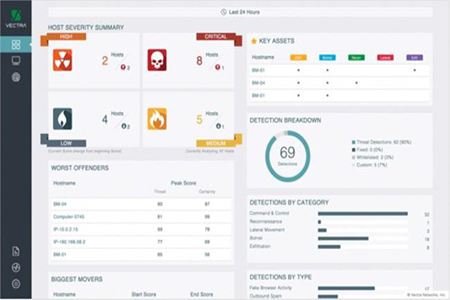What is the difference between frontend and backend
The difference between the front-end and the back-end is that the front-end is the part that we can directly view, mainly written in HTML, CSS and other languages; the back-end is the side that users cannot see and runs in the server, mainly through java , written in Python and other languages. (Recommended: php Chinese online live class (front-end and back-end applet))
In the process of web development, the front-end and the back-end are two The most commonly used terms, they play an important role in web development. The front end is what we see of the user interface and the back end is the part that we cannot see and interact with. Next, in the article, we will introduce the difference between the two in detail

What is the front-end?
The front end is the part that we can directly view, it involves everything that users can see, touch and experience. For example, the various graphics, buttons, pictures, navigation menus, etc. you see on the website. The front end is also called the "client side" because the action takes place on the client side which in this case is the user's side. Usually the client refers to a computer application, such as the web browser that is viewing it. Front-end development mainly involves designing websites. Use a combination of tools (including HTML, CSS and JavaScript) to create a visually appealing and user-friendly design interface[Recommended tutorial: Quick Start to Front-End Development】

What is the backend?
The backend is called the "server side" and is the part we cannot see. It is more like an indirect service provider for front-end development. It is the part of the system that does not have direct contact with the user. Unlike the frontend, it runs on the server side but communicates with the frontend to make sure everything is working properly. In every application, there's also a large portion of non-UI code that handles all the complex systems going on in the background. The people who handle the backend are usually programmers and developers.
Backend developers handle everything that doesn't involve generating a user interface, such as writing APIs, creating libraries, or adding utilities to everything created by web designers. They facilitate communication between the presentation layer and the business layer. They play a vital role in web development and their role is highly collaborative compared to front-end web designers. In short, backend web development is the combination of development and maintenance of the core functional logic of a software application. Simply put, back-end developers write code to make sure everything works properly on the front-end. Compared to web designers, they tend to spend more time figuring out logic and implementing algorithms to ensure the website functions properly. This is the brain of a website.
【Recommended course: Server-side tutorial】

Difference between front-end and back-end
Meaning:
The front-end is the part of the website that is visible to the user, e.g. Graphical user interface (GUI) and command line, including design, navigation menus, text, images, videos, etc. In contrast, the backend is the part of the website that users cannot see and interact with. It's all about how everything works.
Function:
Both play a vital role in web development, and although they have considerable differences, they are like the same Two sides of the same coin. The front end is about the visual aspects of the website that users can see and experience. Instead, everything that happens in the background can be attributed to backend web development. It's more of an enabler of the front-end web experience.
Coding language:
The front end is also called the "client" instead of the backend, which is basically the "server side" of the application. Code languages for back-end web development include java, Ruby, Python, PHP, .Net and other languages. The most common front-end languages are HTML, CSS and JavaScript
Summary: The above is all the content of this article. I hope this article can help everyone have a certain understanding of the front-end and back-end
The above is the detailed content of What is the difference between frontend and backend. For more information, please follow other related articles on the PHP Chinese website!

Hot AI Tools

Undress AI Tool
Undress images for free

Undresser.AI Undress
AI-powered app for creating realistic nude photos

AI Clothes Remover
Online AI tool for removing clothes from photos.

Clothoff.io
AI clothes remover

Video Face Swap
Swap faces in any video effortlessly with our completely free AI face swap tool!

Hot Article

Hot Tools

Notepad++7.3.1
Easy-to-use and free code editor

SublimeText3 Chinese version
Chinese version, very easy to use

Zend Studio 13.0.1
Powerful PHP integrated development environment

Dreamweaver CS6
Visual web development tools

SublimeText3 Mac version
God-level code editing software (SublimeText3)
 Essential HTML Tags for Beginners
Jul 27, 2025 am 03:45 AM
Essential HTML Tags for Beginners
Jul 27, 2025 am 03:45 AM
To get started with HTML quickly, you only need to master a few basic tags to build a web skeleton. 1. The page structure is essential, and, which is the root element, contains meta information, and is the content display area. 2. Use the title. The higher the level, the smaller the number. Use tags to segment the text to avoid skipping the level. 3. The link uses tags and matches the href attributes, and the image uses tags and contains src and alt attributes. 4. The list is divided into unordered lists and ordered lists. Each entry is represented and must be nested in the list. 5. Beginners don’t have to force memorize all tags. It is more efficient to write and check them while you are writing. Master the structure, text, links, pictures and lists to create basic web pages.
 What is the name attribute in an input tag for?
Jul 27, 2025 am 04:14 AM
What is the name attribute in an input tag for?
Jul 27, 2025 am 04:14 AM
Thenameattributeinaninputtagisusedtoidentifytheinputwhentheformissubmitted;itservesasthekeyinthekey-valuepairsenttotheserver,wheretheuser'sinputisthevalue.1.Whenaformissubmitted,thenameattributebecomesthekeyandtheinputvaluebecomesthevalueinthedatasen
 Can you put a tag inside another tag?
Jul 27, 2025 am 04:15 AM
Can you put a tag inside another tag?
Jul 27, 2025 am 04:15 AM
❌Youcannotnesttagsinsideanothertagbecauseit’sinvalidHTML;browsersautomaticallyclosethefirstbeforeopeningthenext,resultinginseparateparagraphs.✅Instead,useinlineelementslike,,orforstylingwithinaparagraph,orblockcontainerslikeortogroupmultipleparagraph
 HTML `style` Tag: Inline vs. Internal CSS
Jul 26, 2025 am 07:23 AM
HTML `style` Tag: Inline vs. Internal CSS
Jul 26, 2025 am 07:23 AM
The style placement method needs to be selected according to the scene. 1. Inline is suitable for temporary modification of single elements or dynamic JS control, such as the button color changes with operation; 2. Internal CSS is suitable for projects with few pages and simple structure, which is convenient for centralized management of styles, such as basic style settings of login pages; 3. Priority is given to reuse, maintenance and performance, and it is better to split external link CSS files for large projects.
 How to embed a PDF document in HTML?
Aug 01, 2025 am 06:52 AM
How to embed a PDF document in HTML?
Aug 01, 2025 am 06:52 AM
Using tags is the easiest and recommended method. The syntax is suitable for modern browsers to embed PDF directly; 2. Using tags can provide better control and backup content support, syntax is, and provides download links in tags as backup solutions when they are not supported; 3. It can be embedded through Google DocsViewer, but it is not recommended to use widely due to privacy and performance issues; 4. In order to improve the user experience, appropriate heights should be set, responsive sizes (such as height: 80vh) and PDF download links should be provided so that users can download and view them themselves.
 How to create an unordered list in HTML?
Jul 30, 2025 am 04:50 AM
How to create an unordered list in HTML?
Jul 30, 2025 am 04:50 AM
To create an HTML unordered list, you need to use a tag to define a list container. Each list item is wrapped with a tag, and the browser will automatically add bullets; 1. Create a list with a tag; 2. Each list item is defined with a tag; 3. The browser automatically generates default dot symbols; 4. Sublists can be implemented through nesting; 5. Use the list-style-type attribute of CSS to modify the symbol style, such as disc, circle, square, or none; use these tags correctly to generate a standard unordered list.
 How to use the contenteditable attribute?
Jul 28, 2025 am 02:24 AM
How to use the contenteditable attribute?
Jul 28, 2025 am 02:24 AM
ThecontenteditableattributemakesanyHTMLelementeditablebyaddingcontenteditable="true",allowinguserstodirectlymodifycontentinthebrowser.2.Itiscommonlyusedinrichtexteditors,note-takingapps,andin-placeeditinginterfaces,supportingelementslikediv
 How to add an icon to your website title tab in HTML
Aug 07, 2025 pm 11:30 PM
How to add an icon to your website title tab in HTML
Aug 07, 2025 pm 11:30 PM
To add an icon to the website title bar, you need to link a favicon file in part of the HTML. The specific steps are as follows: 1. Prepare a 16x16 or 32x32 pixel icon file. It is recommended to use favicon.ico to name it and place it in the website root directory, or use modern formats such as PNG and SVG; 2. Add link tags to HTML, such as PNG or SVG formats, adjust the type attribute accordingly; 3. Optionally add high-resolution icons for mobile devices, such as AppleTouchIcon, and specify different sizes through the sizes attribute; 4. Follow best practices, place the icon in the root directory to ensure automatic detection, clear the browser cache after update, and check the correctness of the file path.







